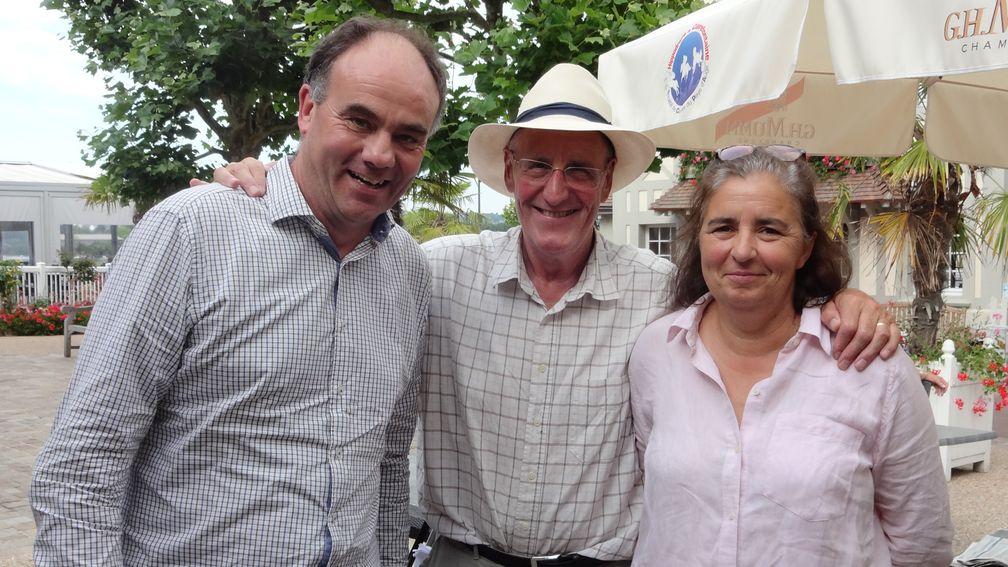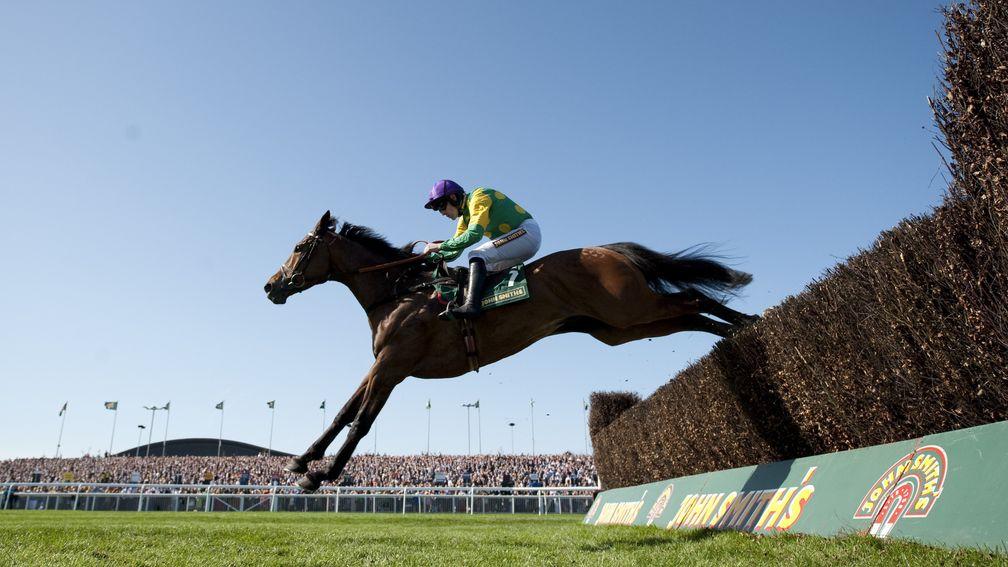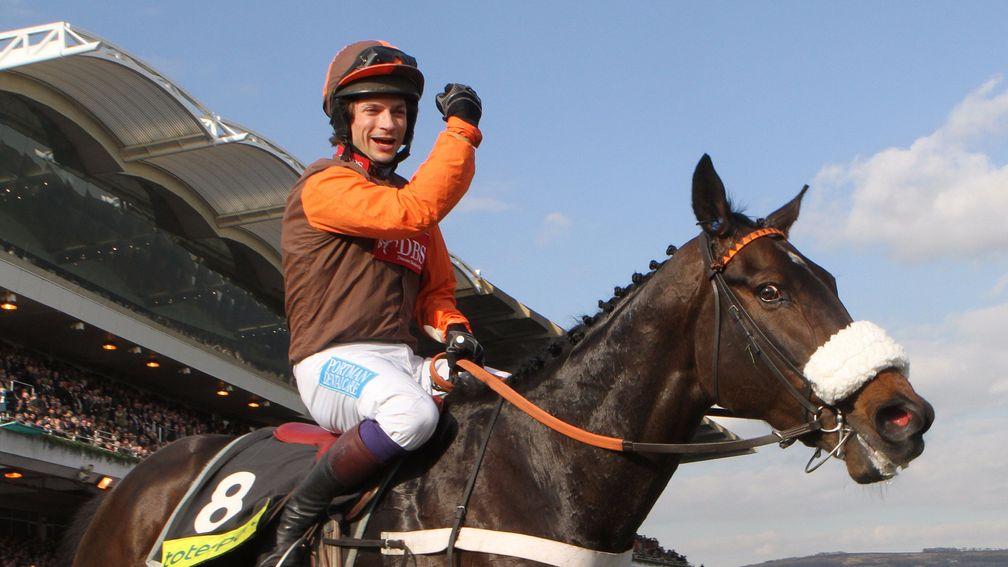A reconnaissance mission to learn the secrets of France's best jumps breeder
Martin Stevens joins Bryan Mayoh as he tracks down his hero Benoit Gabeur

I don’t know what it is about the Thoroughbred Breeders’ Association National Hunt awards held in Doncaster each May, but both times I’ve attended I’ve been drawn into madcap escapades.
Well, actually, I do know what it is. It’s the free-flowing wine on offer, which only serves to exaggerate the eccentricities of British jumps breeders – generally a barmy lot at the best of times.
Twelve months ago, you might remember, David and Kathleen Holmes told me about their intention to make a stallion out of one of the last colt foals born to their late rags-to-riches sire Midnight Legend. Midnights Legacy, as the rising two-year-old is called, was sent to be broken in by Jamie Goss near Banbury on Friday.
This year I was buttonholed by Bryan Mayoh, one of bloodstock’s more analytical thinkers who compiles detailed statistics to inform his mating plans and has been rewarded for doing so by breeding Cheltenham Gold Cup hero Sizing John.
“I want to know how the Gabeurs do it,” he urged, pointing out that the French breeders had been responsible for two consecutive Grade 1 winners – Whetstone and On The Go – on one of the most prestigious cards in the French jumps calendar at Auteuil the day before.
“They’re breeding top-class horses from relatively small numbers to such a degree that it can’t be a fluke. We need to go to France to meet them and find out their secrets.”
He was right. The Gabeurs – husband and wife Benoit and Marie-Christine, both vets – have also bred superstars Bel La Vie, Long Run, Master Minded, So French and Top Notch.

And having known Mayoh for some years now, I realised it would be easier to acquiesce to the demand than to argue. A trip to Normandy in the summer with his wife Dorte was duly booked, and Adrien Cugnasse of French racing publication Jour de Galop played sherpa, fixing up the meeting and translating the conversation.
The scene for Mayoh’s inquisition of his French counterparts was a picnic bench at the picturesque Clairefontaine racecourse, and the Gabeurs answered the rapid-fire questions with alacrity and only a touch of bemusement.
So, how do the Gabeurs do it?
“First of all, we’re craftsmen and not engineers,” said Benoit, a close associate of champion trainer Guillaume Macaire. “It helps that we're hands on with the horses, au cul de la bête [a phrase that doesn’t travel across the Channel very well; look it up and see for yourself].
“You must always proceed with logic and learn from your mistakes, although that’s not easy as in jumps breeding it will take four or five years to find out if you were right or wrong. A trainer can make a mistake and rectify it in months; a jockey, a matter of seconds.
“In retrospect I can see a number of mistakes I made along the way. I’ve sold mares for the wrong reasons. We moved on Sacral Nirvana [the dam of On The Go] because she was aggressive and difficult to catch in the field.”
Pressed on how he chooses new mares from which to breed, Gabeur said: “When I look at the catalogue page of a broodmare in a sale, if there is a bloodline in her pedigree that I don’t like, I move on to the next one."
To illustrate the point, he leafed through the catalogue for the Arqana Summer Sale, taking place that week, found a mare with an ancestor in her third generation he didn't like and signalled with an airily dismissive wave of his right hand that she was not for him.
If that approach is mildly surprising, many in the jumps industry will be downright shocked by Gabeur’s views on conformation.
“I don’t attach much importance to it,” he said. “If the mare has won or produced winners, especially at a good level, I don’t look much at the model.
“Often at the sales, you see buyers who won’t consider buying black-type mares types because they’re not perfect in their legs or physique. That’s certainly not the way for me. Feuille D’Automne [the Gabeurs’ foundation mare, dam of Nononito] was far from a fashion model. The essential point is the breeding.”
Gabeur even happily referred to one of his prized new mares as resembling a Harley Davidson, and not for her sleek contours.
There were many more intriguing insights into the workings of the Gabeurs’ successful breeding operation over a grilling that lasted for longer than an hour.

Did Mayoh find it a beneficial experience? “It became clear that the Gabeurs have no magic bullet to bring success – or if they do, it wasn’t revealed! – but it was evident that they apply a great deal of thought to the methods used to breed and raise horses," he reflected afterwards.
“They do a lot of things just a bit better than their competition. As suggested by Sir Dave Brailsford in his Theory of Incremental Gains, doing a lot of small things just a little better than the opposition can produce a significant difference in results.”
Mayoh added: “Among the most important things I learned were that the Gabeurs have worked closely with their good friend Guillaume Macaire for over 30 years. Monsieur Macaire is not only an outstanding trainer but also an intelligent man who knows a great deal about pedigrees and the produce of stallions all over Europe.
“He initially trains all the Gabeur-bred horses and can give the breeders valuable feedback about the characteristics produced by each mare and by the stallions they might visit.
“They breed to race not sell, so which sires are fashionable is not a factor in breeding decisions, only which stallions are likely to suit their mares. For too many breeders of both Flat and jumps horses the decision on which stallion to use is based on the question of: ‘How much might we sell the foal for?’ But for the Gabeurs it is a case of: ‘Might this mating produce a top-class jumps horse?’
“This objective underpins their approach to raising young stock. Mares and foals are kept outside all year, with a shelter rather than stables to protect them from the worst of the weather. Benoit suggested that ‘stables are for the benefit of the people, not the horses’, although this method is probably better suited to the western part of France than it would be to the west of England!”
Stallions are not selected by the Gabeurs for their arbitrary commercial value, but for more honourable reasons, Mayoh noted.
“There is an emphasis on soundness in the stallions they use,” he said. “Those having raced in Germany are particularly favoured – the sires of two of their three different Grand Steeplechase winners, Kamsin and Lavirco, raced and stood in Germany – since they will never have raced on bute or shown serious physical weaknesses.
“Other sires that have played a big part in the Gabeurs’ success, Mansonnien and Nikos, were also sound, tough horses; while Poliglote, the sire of dual Grand Steeple winner So French, and Cadoudal, the sire of Long Run, were high-class racehorses who were already proven as good stallions.”
It was a similar case for broodmare acquisitions, Mayoh observed.
“In choosing mares, the Gabeurs believe that the conformation of the mare is irrelevant, which is not a view shared by most jumps breeders, particularly those primarily aiming to produce show horses that will bring good prices in the sale-ring,” he said.
“However, temperament is regarded as important, for the practical reason that they are busy people who look after their own horses and don't want to have to deal with mares that are difficult to handle.
“While the Gabeurs placed less emphasis on the racing ability of the mare, I noticed that all six of the mares that have produced their 19 Grade 1 winners to date were themselves winners. The best of them was Westonne, a Grade 3 Chase winner and already dam of the dual Grand Steeple winner So French, the champion four-year-old chaser Whetstone and the dual Grade 2 hurdle winner Device.
“Probably the least impressive racehorse among those mares was Bibelle, whose only success came in a Flat claiming race but who produced Bel La Vie, a Grade 1 winner over both fences and hurdles, who as well as winning the Grand Steeplechase also finished second in the French Champion Hurdle. Bibelle was the only one of the six Grade 1-producing mares not to win over obstacles.”
Armed with all that information, did Mayoh feel confident he could now produce another Sizing John, or a So French of his own?
“I found Benoit and Marie-Christine to be friendly and intelligent people, happy to share their knowledge with a kindred spirit," he summed up. "While I very much doubt that I shall ever rival their total of top-class jumps horses, I very much hope that what I learned will at least help me produce a second one."
Meanwhile, I await with trepidation what mission my next visit to the TBA National Hunt awards will bring.
If you enjoyed reading this, you might also like...
The audacious plan to make a stallion out of Midnight Legend's last foal
Stats study pays off for Gold Cup winning breeder Bryan Mayoh
Published on inNews
Last updated
- Something different for Burrows as Group 1-winning trainer consigns at the Tattersalls Cheltenham December Sale
- Breeding right to Blue Point sells for €430,000 on Darley winning bid platform
- Classic hero Metropolitan set for strong home support with Etreham busy at the sales
- 'It has been nothing short of incredible' - Grace Hamilton on Godolphin Flying Start experience
- ‘She’s one of the best two-year-olds in Europe’ - bluebloods set to go down a storm at Arqana Breeding Stock Sale
- Something different for Burrows as Group 1-winning trainer consigns at the Tattersalls Cheltenham December Sale
- Breeding right to Blue Point sells for €430,000 on Darley winning bid platform
- Classic hero Metropolitan set for strong home support with Etreham busy at the sales
- 'It has been nothing short of incredible' - Grace Hamilton on Godolphin Flying Start experience
- ‘She’s one of the best two-year-olds in Europe’ - bluebloods set to go down a storm at Arqana Breeding Stock Sale